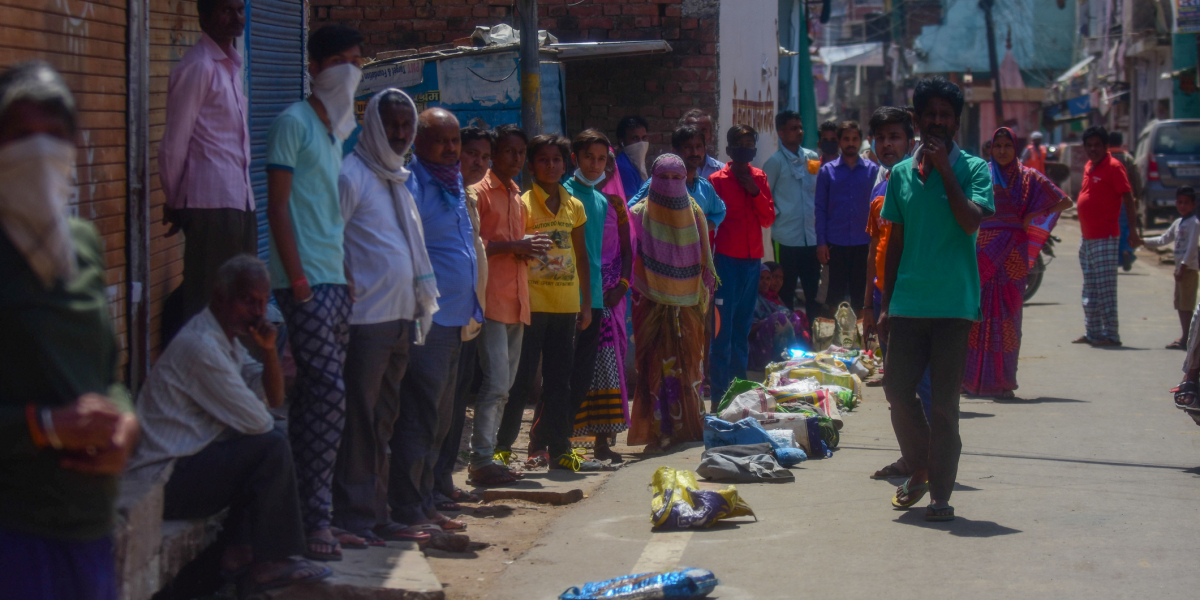
Why the issue of migrant security should be top priority in India's COVID-19 response
(This blog originally appeared in India's Economic Times on 8 April 2020)
The lockdown’s effect on Indian urban informal workers is clear. Two challenges define policy responses to it.
First, how do we actually deliver already announced entitlements - say, Rs 1,000 to daily wage workers in Uttar Pradesh- to these workers? Second, is our response only immediate relief, or also near-term recovery of the informal economy?
The conditions of informal employment do not just create and shape the nature of need, but they also confound processes of delivery for those far from the policy-accessible world of job and rent contracts, bank accounts and identity documents. Four possible practice approaches focusing on food, income and shelter for immediate relief and near-term recovery over the next six months follow.
1. Should delivery be universal or targeted?
Universal approaches are excellent conceptually, but previous experience of public programmes tell us that informal workers are likely to be left out of the delivery of a universal entitlement. For food, universal provision is ideal for the next six months, regardless of how long lockdowns continue.
Yet, this provision must mean the setting up of expansive public feeding centres near where informal workers are, rather than just reliance on a universal income support that leaves the onus on the citizen to self-provide at a time of restricted mobility and uncertain supply chains. The form of universal delivery must, thus, be decided, along with the entitlement. Otherwise, we risk failure in outcomes even with the best intent.
2. Should we approach by sector of work?
In many urban centres, membership-based organisations of workers have grown. These are sector-specific -- domestic workers do not organise the same way as transport workers. These federated organisations must be critical delivery partners for both emergency relief and medium-term recovery, and be considered as experts on last-mile delivery.
They are ideally placed to expand the set of informal workers with some form of state registration (say, construction workers registered with a state welfare board vs those who are not, street vendors with a licence vs those without), filling precisely the gaps in universal safety nets. For income, this may be a better approach than just reliance on transfers, bank account coverage, and registration with a state agency.
3. Can spatial proxies work?
Given the urgency of needed responses, one proxy can be universalising distribution of income and food through reaching all residents of income-poor neighbourhoods -- informal settlements, urban villages, unauthorised colonies. Many such neighbourhoods have formal and informal community organisations that can lead in their own recovery and relief response with government support.
Targeting where informal workers live, especially at a time of constraints on mobility, relies on a defensible assumption that most who live in poor neighbourhoods are informal workers. By distributing food in vulnerable communities, or ensuring that the public feeding centre is near them, we ensure that we don’t just target ‘everyone in the city’, but make a spatial priority of where relief must go first.
4. Can we innovate with localised ‘small-loop’ solutions?
For example, GoI has rightly announced that tenants cannot be evicted in April and that rent should be waived. Yet in urban India, where 90% of rent agreements have no written contract, this directive is unenforceable. Further, low income rental arrangements often have landlords who are informal workers themselves.
Here, a ‘small-loop’ solution could see an organisation based in a particular settlement, or a worker organisation with a fixed set of members, collect information on rent and use crowdsourced funds to make a rent transfer to the landlord. This is far likelier to protect tenants than a policy declaration of an eviction moratorium that relies mostly on goodwill.
Such solutions can only be micro-scaled -- one has to know these tenants and their landlords. For food, a similar response would be a State-supported community kitchen in a specific settlement or a local kirana store that governments pay in advance against which local residents can draw. The spatial proximity of these solutions is ideal for lockdown conditions. Later, as the lockdown eases, ensuring supply chains to these local economic actors will be as vital as re-starting formal, large-scale supply chains.
How long do these measures need to be in place? Emergency relief targets consequences of up to 14 days of no income. Yet there are different consequences at 30 days (when rent cycles kick in), 60 days (when savings and emergency consumption loans run out), and six months (when distress migration patterns and new job patterns emerge). Responding to the informal economy cannot only be about relief for the lockdown, but must persist for six months to prevent deep slides into poverty, malnutrition and vulnerability.
The easing of a lockdown, or a macro economic stimulus, then must account specifically for what openings will first impact informal economy workers – which sectors and which neighbourhoods.
Workers are not unaware of the risks they are taking when they start walking on the highways to homes, or break lockdown impositions in search of food or income. They are doing what the lockdown wants to do: prevent death. For these workers, death can result from non-Covid-19 health-related mortalities heightened by the lockdown, from Covid-19 itself, as well as from economic risks the lockdown generates.
Both the design of a lockdown and its gradual easing must recognise all three of these vectors to mortality, not just Covid-19. Workers will need support for at least the next six months to recover, and we must challenge ourselves to find specific and implementable processes so they don’t have to choose between health or economic risk.